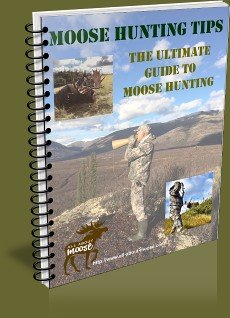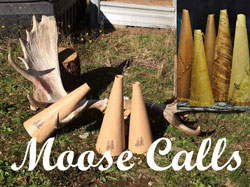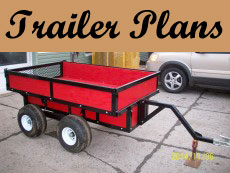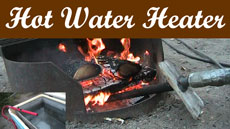
Do Moose Anlers Get Larger Every Year
by An
(Canada)
Do moose get larger every year with their antlers, or could one 'top out' at maximum size and their antlers will continue to get larger every year? If one could keep the moose from dying of natural causes, could they grow forever and keep getting larger? Thank you.
Moose Antler Growth Patterns
Thanks for the great question...The growth of moose antlers is a fascinating topic in the world of wildlife biology and ecology. Moose (Alces alces) are known for their impressive antlers, which are primarily grown by males. These antlers serve multiple purposes, including attracting females during the mating season, establishing dominance among males, and as a tool for foraging and defense. However, the growth of moose antlers is not a simple linear process, and there are several important factors to consider when examining their growth potential.
First, it's essential to understand that moose antlers are not static structures. They are composed of bone and grow rapidly during the spring and summer months, fueled by a combination of hormonal changes and ample food resources. The antlers' growth rate can be quite remarkable, with some moose adding as much as an inch (2.5 cm) of antler length per day during peak growth periods.
The growth of moose antlers is influenced by various factors, and there are limits to their potential size:
Age: Younger moose typically have smaller antlers compared to older individuals. Antlers continue to grow larger as a moose ages, generally peaking in size between 5 to 12 years of age. After reaching this peak, antler size may stabilize or start to decline due to factors like wear and tear, changes in hormone levels, and overall health.
Genetics: Genetics play a crucial role in determining antler size. Some moose may have genes that predispose them to grow larger antlers, while others may have smaller antlers genetically. Selective breeding and genetic variation within populations can influence the range of antler sizes seen among moose.
Hormones: The production of testosterone, a hormone associated with male secondary sexual characteristics, plays a pivotal role in antler growth. During the spring and summer, testosterone levels rise, stimulating antler growth. After the mating season (rut), testosterone levels drop, leading to antler shedding. The following spring, antler regrowth begins anew. This cycle continues throughout a moose's life, but the antlers may not always grow larger with each cycle.
Nutritional Factors: Adequate nutrition is essential for healthy antler development. Moose require a diet rich in minerals, such as calcium and phosphorus, to support antler growth. Nutritional deficiencies or poor forage quality can limit antler size.
Environmental Conditions: Environmental factors, such as climate and habitat quality, can impact antler growth. Harsh winters with deep snow and prolonged periods of extreme cold can lead to reduced body condition and may result in smaller antlers.
Injury and Disease: Injury or disease can affect antler growth. Damage to the antlers during their development can cause deformities or reduced size. Chronic health issues can also limit a moose's ability to grow large antlers.
Wear and Tear: As moose age, their antlers may show signs of wear and tear. Antlers can become damaged or broken during battles with other males, reducing their overall size and symmetry.
Considering these factors, it's clear that moose antlers do not keep growing indefinitely. There is a limit to how large they can become, and this limit varies among individuals. Antler size tends to peak in mid-adulthood, and from that point, it may stabilize or gradually decline over time due to factors like wear and tear, changes in hormone levels, and overall health.
Therefore, even if a moose were protected from natural causes of death, it would eventually reach a point where its antlers would not continue to grow larger with each passing year. Instead, they would likely stabilize or decrease in size as the moose aged. Ultimately, the growth of moose antlers is a dynamic and complex process influenced by a combination of genetic, hormonal, nutritional, and environmental factors, and it is subject to inherent limitations.
Cheers,
~ Mark - The Mooseman
Comments for Do Moose Anlers Get Larger Every Year
|
||
|
||
|
Click here to add your own comments Join in and write your own page! It's easy to do. How? Simply click here to return to Ask An Expert. |
Want to learn how to hunt moose? Or are you wanting to increase your moose hunting skills?
Look no further!
Our moose hunting tips book is written with
not just the novice in mind, there are tips in the book that even the
most seasoned moose hunter will find of value.
The book includes 57 chapters, with more than 150 pages of information, jam packed with tips, techniques and discussions - The Ultimate Guide to Moose Hunting!
And don't forget to order one of our Fiberglass Moose Calls. In stock and ready to ship.








